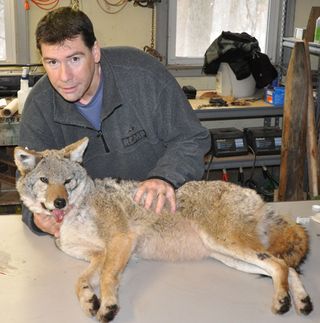Not Dogs: Urban Coyotes Remain Monogamous

Many monogamous members of the dog family stray from their mates when they take up residence in urban areas. But while city life makes some dogs hedonists, researchers were surprised to find that urban coyotes stick by their partners for life.
Scientists at Ohio State University didn't find any evidence of polygamy in genetic samples taken from 236 coyotes in the Chicago area over six years. They also didn't find any evidence that the coyotes ever left a living partner for another mate.
"I was surprised we didn’t find any cheating going on," study researcher Stan Gehrt, an Ohio State wildlife ecologist, said in a statement. "Even with all the opportunities for the coyotes to philander, they really don't. In contrast to studies of other presumably monogamous species that were later found to be cheating, such as arctic foxes and mountain bluebirds, we found incredible loyalty to partners in the study population."
Previous research has found that many members of the dog family stray from monogamy when they live in areas, like cities, with plenty of food and groups of dogs living close together.
"You've got territories that abut each other," said another researcher involved in the study, Cecilia Hennessy. "And coyotes can make long-distance forays. So you'd think, based on previous investigations of dog behavior, that cheating would be likely."
But sticking together has its benefits in the city, the scientists said. Since urban areas provide lots of resources (like food) that allow female coyotes to have large litters of young, a faithful partner's parenting help comes in handy.
"If the female were to try to raise those large litters by herself, she wouldn't be able to do it," said Gehrt. "But the male spends just as much time helping to raise those pups as the female does."
Sign up for the Live Science daily newsletter now
Get the world’s most fascinating discoveries delivered straight to your inbox.
This helps ensure that the offspring survive and the arrangement might help explain why the animals are thriving in urban regions, such as the greater Chicago area, where there may be as many as 2,000 coyotes.
The study was published in a recent edition of The Journal of Mammalogy.
Follow LiveScience on Twitter @livescience. We're also on Facebook & Google+.

Most Popular


